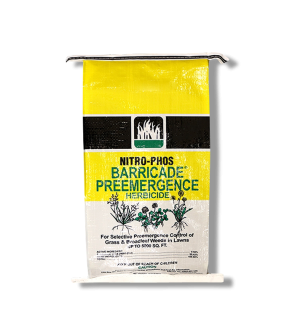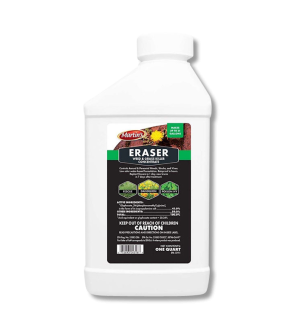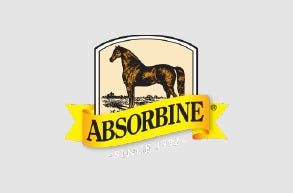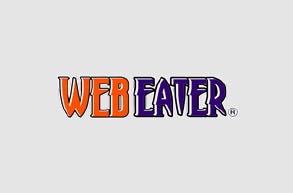Gain access to personalized product screening, the best pricing, rewards, and more!
Barnyardgrass Control
Most Effective Products
Barnyardgrass Control: How to Get Rid of Barnyardgrass
Barnyardgrass (Echinochloa crus-Gallia) is a summer annual grassy weed that has long been a problem on agricultural farms but has now spread to residential lawns. It is often found in rice, corn, orchards, vegetables, and other agricultural crops. It can also be found in moist turf areas and marshes.
This weed is easy to identify because of its unique seedhead, which is usually purple with a bristle at the end and varies from 2 to 8 inches in length. Seeds develop on side branches, flat on one side and round on the other.
This weed can produce more than 2,400 pounds of seeds per acre. Wind, water, animals, and humans help spread the seed to other areas. Barnyardgrass is a vigorous grower and quickly removes vital nutrients such as potassium, nitrogen, and phosphorus from the soil, so if it grows on your lawn, you have to act fast to control it before it zaps the lawn of all of its nutrition.
If barnyardgrass has invaded your lawn, our step-by-step DIY treatment guide will show you how to remove it quickly and affordably.
Identification
Before proceeding with a treatment program, you must be certain you are dealing with a barnyardgrass infestation. Careless identification can lead you to use the wrong treatment methods, which can waste time and money. Below are the characteristics that will help you know what barnyardgrass looks like.

- Barnyardgrasses grow in clumps and mature to 1 to 5 feet in height. The grass blades are mostly flat, and the upward-facing surfaces are hairless.
- The grass blades can be up to 8 inches long and 3-quarter inches wide. These weeds are most identifiable when flowering or when their seedheads have formed.
- The plant's inflorescence, or flowering structure, is a green-to-purple, lumpy panicle. When released, the seeds look like light-brown teardrop shapes.
Use the description and image above to help you identify whether your weed is barnyardgrass. If you are unsure which kind of weed you are encountering in your yard, contact us to have the experts identify the weed for you.
Inspection
Once you are confirmed that you are dealing with barnyardgrass, you can move on to inspection. During this phase, you will locate areas where barnyardgrass is thriving and observe the conditions that allow it to thrive. This information will help you know where to focus your herbicide application.

Where to Inspect
Barnyard grasses grow in moist, poorly drained areas where the soil has been disturbed.
Common sites include crops, fields, wastelands, ditches, marshes, roadsides, marshes, wet meadows, pastures, floodplains, lakeshores, gardens, new turf establishments, and poorly maintained lawns.
What to Look For
Watch out for an erect or slightly sagging stalk growing at the tops of the plants. Aside from checking the severity of its presence, also check what maturity level the barnyard grass is at because if it is more mature, you'll have a more difficult time removing it.
Treatment
Barnyardgrass can be a headache to hand-pull, and frankly, doing so is a waste of time because if it has already gone to seed, it will grow back if you yank it out from the ground.
The best option for control is utilizing chemical herbicides. Wear the proper personal protective equipment before applying any herbicides to your yard.
We recommend using a non-selective herbicide like Eraser 41% Glyphosphate, which contains glyphosate, to kill barnyardgrass in your turf. This product is non-selective, meaning it will kill all foliage it comes into contact with.
Step 1: Spot Treat With Post Emergent Herbicide

Determine how much Eraser 41% Glyphosphate to use by measuring the square footage of the treatment area. To do this, measure the length and width of the treatment area in feet and multiply them together (length X width = square footage).
For spot treatments, use 2 1/2 oz. (5 tbs) of Eraser 41% Glyphosate in a gallon of water to treat 300 sq. ft.
Mix the appropriate amount of Eraser 41% Glyphosate into your sprayer and mix well. You can do this by filling the tank with half the amount of water, adding the correct amount of product, and then filling the tank the rest of the way with the remaining half of water. Agitate the tank to mix it in thoroughly.
With a fan-tipped nozzle, spray a fine mist onto the barnyard grass to ensure it is evenly coated. To better protect the desired foliage, you can place a cardboard box between the weed and the desired foliage to prevent drift.
Step 2: Reapply if Needed

If barnyard grass is still present, you can make a second application four weeks after the first one.
It’s best to apply it on a warm, sunny day when daytime temperatures exceed 60 degrees Fahrenheit. Warm, sunny weather accelerates weed control.
Prevention
After you have eliminated barnyardgrass from your property, you need to implement culture practices as shown below:
- Prevent barnyardgrass from returning to your lawn with Barricade Pre-Emergent Herbicide Prodiamine Granular. This product contains prodiamine, a highly effective active ingredient that controls and prevents seeds from sprouting. Depending on your turfgrass type, Barricade can be applied at a rate from 1.5 pounds to 4 pounds per 1,000 sq. ft. Calibrate your spreader to the right spreader setting for application and load the appropriate amount of granules into a push or broadcast spreader. Apply the granules until your lawn is covered evenly to get a uniform application. After broadcasting the granules, you should water and activate them with at least 0.5 inches of water.
- Mow your grass at proper intervals to maintain a thick growing density. A lawn dense with taller trimmed grass can better choke out weeds and prevent them from establishing.
- Reduce the shade cast on your lawn by trimming overgrown shrubbery and tree branches, raking away leaf litter and picking up any debris, and employing a proper watering schedule to provide the local grass with enough water to strengthen its roots but not so much that it encourages weeds. Many grasses require 1 inch of water every week. Apply the water all at once in the morning so it has time to seep into the ground without evaporating in the sun.
Key Takeaways
What is Barnyardgrass?
- Barnyardgrass is a difficult summer weed to control because it has multiple germinations or cohorts. It is also a fast grower known to spread quickly over lawns and gardens.
How to Get Rid of Barnyardgrass
- We recommend applying a spot treatment of Eraser 41% Glyphosate to remove Barnyardgrass from your lawn.
Preventing Barnyardgrass Reinfestations
- To prevent barnyardgrass from returning, a combination of good lawn maintenance practices and repeat pre-emergent applications of Barricade Pre-Emergent Herbicide Prodiamine Granular should be implemented.



























































































































































































































































































































































































































































































































































